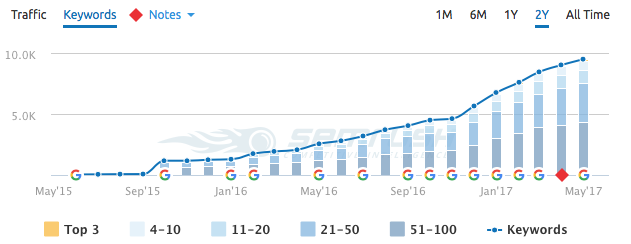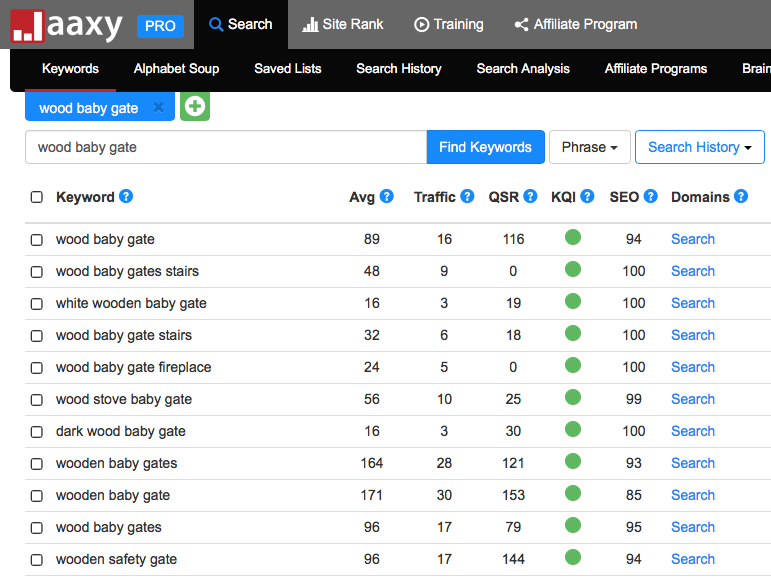 Fridays with Vicky 129
Fridays with Vicky 129
Getting free exposure for your blog or website can be invaluable. There are many different ways helping your content along so that it ranks well in the search engines, different ways to search engine optimize blog posts.
In this post, we’ll talk about 11 Ways to Search Engine Optimize, SEO, Blog Posts. Things you can do to increase the chances of reaching those top positions we are all after in Google.
But let’s start with the basics…
What Is Organic Listings?
Organic listings are posts or pages that show up for free when you type in a specific search into Google or other search engines.
In this case, we will use Google. Our search term is “make money with stocks” as you can see there are two types of listings that show up free organic ones and the paid Ads. Our objective is to rank for specific keywords, for free in the organic listings.

5 Reasons WHY You Want Organic Traffic
There are many reasons to why organic listings that generate traffic to your blog or website are great. Here we list 5 great reasons to WHY you want organic traffic:
- Organic traffic is free
- It can be visible online for a very long time
- It can generate very targeted traffic
- It can be a sign of authority in your niche
- Over time it can generate a lot of traffic
What Are Realistic Expectations
Generating traffic through free organic traffic using Google takes time. Some of your posts and pages will rank well and get a lot of visitors, some might not rank as well and won’t get the traffic you want. Over time though, if you are consistent and submit great content on a regular basis, you will see a result.
This image is taken from SemRush showing the keyword rankings in Google for my Amazon Case Study Site. I submit helpful content on a regular basis, right now I submit around 3-4 posts weekly, starting out I submitted two. The graph shows that if you stick with it, you’ll get more and more keyword rankings. More rankings, more traffic, and hopefully more sales, right.

The big question is, how to get your content to rank in Google?
11 Ways to Search Engine Optimize, SEO, Blog Posts?
1. Content-Length
How long should a blog post be? I would say this depends on the purpose of your post or page. In our case here, where we want to rank it in Google and other search engines, I would say a word count of 500+ words. The content should always be relevant and not bore your reader, but if you are passionate about your content you will probably not have a problem writing 1000+ words articles at all.
The longer more in depth engaging content you have the better. Longer content has the chance to rank for more keywords as well.
The content length for my case study site is 500 – 1000 words for the general articles, for reviews 1000+ words and for top lists 1500+ words.
Looking at the top 5 articles that generate the most traffic for the case study site last month, they have the following word count:
- Article 1 – 1613 words
- Article 2 – 579 words
- Article 3 – 1921 words
- Article 4 – 1154 words
- Article 5 – 1906 words
They are all 500+ words, some close to 2K words. I’m in the process of submitting some longer 2K+ posts and I’ll share the result when that’s in.
Want more on word count read: How long should a blog post be
2. Keywords
Keywords are the words that you type into the Google search bar when you are looking for something. This could be one word or a phrase. Recently I typed in the keyword phrase “Punta Cana resorts”.
When we type in the word or phrase the search results will show. First, we have the paid ads, if there are local options they will show second often with a map but after that, the organic rankings will show. This is where we want our content to show up. We want our posts and pages to show up high preferably position 1-3, in the search engines.
This is free traffic that over time grows and can generate a lot of visitors for a long time to come.
Remember the case study growth…

There are many different places to find keyword ideas. I search online to get ideas but I also use Ubersuggest, Jaaxy, magazines, social media and other platforms.
When you have some good suggestions you want to find out if these keywords are worth your time. It comes down to two main things, traffic and competition.
You want to make sure your keyword have some traffic and not too much competition.
I use Jaaxy as my keyword research tool.
It’s easy to use and I get the results right away. Just type in your keyword and you will know right away if you should go ahead and use it or look deeper.
Here I typed in “wood baby gate”. We see that we have some traffic and not too much competition.

I would go for the keyword “wooden baby gates”. It has an average search volume of 164 monthly, QSR which means competitors of 121, an SEO score of 93 which is pretty good and a green light that means it’s a “go” keyword.
We explain the keyword research process in detail here.
When you find a great keyword, how do you use it in your content?
The main thing is to keep your content relevant to your keyword. Then I add the keyword to the…
- Title
- First and the last paragraph
- Image tag
That’s pretty much it, depending on how long my content is, I might fit in the keyword a couple of more times if the content is really long.
If you want some more in-depth information about keyword research read – Keywords 101
3. Catchy Headline and Introduction
To get the attention in Google, to get anybody to click through you need a compelling headline. A boring title and nobody will click, a catchy headline will draw attention and get people to your site.
There are many ways to write a great headline. Here are a few examples.
 Using numbers will stick out and draw attention:
Using numbers will stick out and draw attention:
- 10 Ways to…
- 4 Things to…
- 10 Best…
Ask a question:
- Have you ever…
- Do you know…
- How often…
How to articles is another great way to draw attention:
- How to do…
- How to fix…
- How to rank…
Want more information on headlines, read – 5 Easy Ways to Write a Catchy Headline
4. Relevant Content
If your site is about gardening, stick to that main topic. Use the pages and posts to drill down. If you do a post about “how to grow tomatoes” talk about that in your post, be specific, deliver value and information that your reader want to read. If you go off and talk about lawn mowers, just to try to sell one, you are not being relevant. Stick to tomatoes.
Create the perfect reader profile. Who is your perfect reader and customer, create a persona and write for that specific person. By doing that you will keep your content highly relevant to your targeted reader.
Use keywords and keep your content relevant to that keyword. We already talked about keywords but using them and creating your content around it, is a great way to stick to your topic and stay relevant.
5. Internal Links – Links to Improve Content Marketing
Linking between the posts and pages on your own site, internal linking, can help your readers find the information they are looking for but it’s also important for your content marketing strategy.
Some might find it pretty simple linking between relevant content on your own site, but there’s actually a lot more to it than you might think.
Let’s look at a few things you should be thinking of when doing your internal linking, but first what’s the purpose of doing it?
The purpose of internal linking:
- Help your readers navigate and find the information they are looking for.
- It defines the hierarchy of posts and pages of a website.
- It helps distribute ranking power and page authority. ( I did a test here that prove this to be true )
The main idea is that internal linking is helpful to the reader and it helps strengthen the SEO value of a website.
5 Things to think of when using internal links
1. Create a lot of helpful content. This is a must, to be able to do any internal linking you’ll have some great content to link between.
2. Use anchor text, and not just “click here” phrases. By using anchor text, you help the crawlers to find the content and its importance.
3. Link naturally to help your readers.
4. Be relevant with your links.
5. Don’t over do it. If you link naturally and relevant content then you are probably good. Nobody likes to read a text that’s riddled with links, internal or external.
6. External Links or Outbound Links – Link to Helpful Resources on Other Blogs
External links are outbound links that link from your own site to another domain. Linking out to other relevant domains help the search engine to understand where your site fits in, it helps you create trust and help them see the quality of your site.
So what sites should you link to?
The key is relevancy, link naturally to other relevant helpful sites. I prefer linking to authority sites when linking out from my site. With my case study site in the health niche, I link to health resources when suitable to explain a condition deeper for example.
Other outbound links I use are affiliate links.
Don’t over do it though with outbound links. Keep it relevant and helpful!
7. Encourage Comments
One way to get engagement on your site is by encouraging comments. Comments are great in many ways but most importantly it creates trust. If you have a lot of comments on a post, others will see that and value it. They will most likely be more encouraged to leave their own feedback as well.
5 Ways to Encourage Comments on Your Posts
- Deliver great content.
- Ask a question at the end of the content.
- Ask people to leave a comment.
- Be a little controversial and see if your reader agrees with you or not.
- Make it easy to comment.
It is great for SEO purpose to get discussions going on your posts. You get engagement and more content created, these are only positive when trying to rank your content in Google.
If you want more information on ways to get comments read: 7 Ways to Get More Comments

8. Set a Posting Schedule… and Stick with It
When starting out blogging or building your website, commit to something that you can really follow through with. Maybe one post a week or even two posts monthly.
It’s about quality, not quantity content.
After a few months maybe you can add in another post monthly or weekly. Work yourself up to a number that feels comfortable with.
When you have figured out what works for your site, think of possibly outsourcing some of the content. This has helped me tremendously and saves me a lot of time.
I also like staying ahead of schedule preferably a couple of months and that would be impossible if it wasn’t for my hired writers.
For my case study site, I submit the following content weekly:
- Mondays – product review.
- Tuesday – informational post.
- Wednesday – misc post, this could be information, top 10, product review…
- Friday – informational post.
4 post weekly, over a year, that adds up to 208 posts.
Most importantly figure out a posting schedule that works for you and stick with it.
Google seems to like when content is delivered on a regular basis. I can’t say that I have any scientific proofs of that but looking at the case study site and its ranking I’ll say that a regular posting schedule seems to have helped the constant improving rankings.
9. Share Your Post
The more traction your post gets, the more popular it becomes the more traffic it will get. But how do you get the eyes on your post when it’s completely new?
How to market your post is a completely separate article but I do want to mention a few ways that you can share your post.
3 Ways to Share Your Post When It’s “Live”
- Social Media – Twitter, Facebook, Pinterest, Instagram… whatever your social media to-go-to platform is.
- Send an email to your list and tell them you have a new post live on your blog
- Share it on forums, chats or other niche groups that you are involved with. At times I share my posts from here on WA, it’s niche related and the members find it valuable.
The more popular a post is the more important in Googles eyes…
10. Make Your Content Easy to Share
This might be obvious but I still run into blogs and websites that do not have this set up properly. There are no social media icons to be found and it makes it hard to share the content, even if it’s really good we seldom go out of our way to share something.
Now, if the social media icon of our preferred social media platform is easily accessible and shareable we are a lot more likely to share the content if we find it helpful.
Make things easy for your readers to share. The more your content is shared, the more eyes on it and the more important Google thinks it is.
11. Stay Away from Black Hat Methods
Don’t buy traffic, don’t buy social likes, don’t try to “cheat’ Google in any way. Stay away from “black hat” tactics, it might boost your site temporary, but in the long run, it will not be worth it.
Build a site on quality, helpful content, something with patience, something for the long run and you will be much better off.
What are your thoughts on blog or website content and search engine optimization? Did we forget anything? Please share your thoughts on Ways to Search Engine Optimize, SEO, Blog Posts.
Have a productive day,
Vicky



Your article is very appreciated….and valuable…….going through its simple comprehension,..easy to understand……very productive…..I beliv….those tips will be productive in my site…abiding with those of white hat tips……
Great thanks for sharing it
Let me know if you have any questions, glad you liked the post!
Uber suggest is great, but here is another funky free tool that brings out a list of the trending related keywords http://www.soovle.com
Thank you for the suggestion, I have not heard of that one will have to test it out.